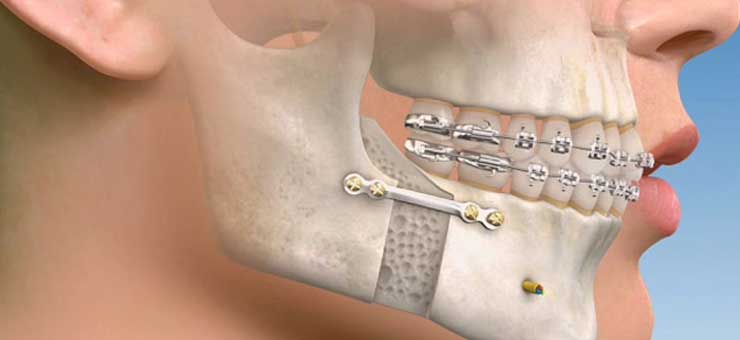
DESCRIPTION
- Orthognathic surgery is a specialist branch of oral and maxillofacial surgery and is usually part of orthodontic treatment. It involves the modification of the jaws in order to change their alignment and position to improve both the function and appearance of the mouth and sometimes airway (how you breathe).
- Orthognathic surgery is performed by an oral and maxillofacial surgeon in collaboration with an orthodontist. It often includes braces before and after surgery, and retainers after the final removal of braces. Orthognathic surgery is often needed after reconstruction of cleft palate or other major craniofacial anomalies. Careful coordination between the surgeon and orthodontist is essential to ensure that the teeth will fit correctly after the surgery.
- The details of the surgery performed will depend on what you are having done and will be explained to you by your oral and maxillofacial surgeon.Surgery might aim to reposition part or all of the top and/or lower jaw.The surgeon gains access to the bones inside the mouth via the gums. Once the areas of bone have been revealed and loosened they are moved into a new position and fixed in position with small metal plates and screws, which usually remain in the bone. Sometimes these plates will be removed later, which will mean another operation. The jaw position is also maintained using a thin, clear plastic splint (or wafer), which sometimes remains secured to the lower teeth for some weeks. We use dissolving stitches to neatly close up the gums.





